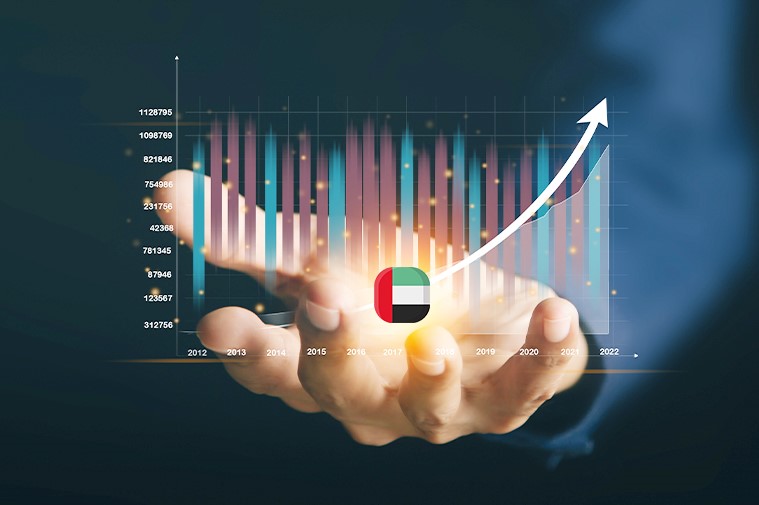2022 is the first time in history that global digital ad spending is expected to cross the $600 billion mark. With omnichannel marketing, the opportunity to reach and engage new customers has also grown. Online shopping saw a drastic increase of 43% during the pandemic.
With these improvements, new forms of marketing are popping up daily – social media advertising, affiliate marketing, email marketing, and the most preferable one – performance marketing.
Our topic of focus today is performance marketing.
What is performance marketing?
Performance marketing is the type of digital marketing in which brands pay the marketers after their business objectives are met instead of the quantity of work done, time, and effort. Performance marketing is driven by results.
For example, an advertiser pays the publisher for placing their ads on performance marketing channels – social media, search engines, videos, etc. Instead of paying for the ads the traditional way, the advertisers pay based on how well their ad performs by measuring the clicks, sales, reach, engagement, and more.
Performance marketing is focused on measurable metrics like the number of clicks, downloads, leads generated, and the number of conversions.
How to measure performance marketing?
As we discussed earlier, advertisers pay based on how well their ads perform on a given platform. There are 5 different ways to measure performance marketing. And, here they are:
1. Cost Per Click (CPC)
Cost Per Click is an online advertising revenue model where the advertiser pays a cost to the publisher based on the number of clicks on the ad. CPC is also called Pay Per Click (PPC). CPC is used to determine the costs of ads on search engines, Google Display Network For Adwords, social media platforms, and other publishers.
CPC is a factor to calculate the online advertising types including:
- Text ads
- Shopping ads
- Video ads
- Promoted tweets
- Facebook ads
- Image ads
- Instagram ads
- LinkedIn ads
The best thing about CPC ads is that it forces the publishers to advertise on the platform where your target audience hangs out to increase their chances of getting paid by gaining more clicks.
2. Cost Per Impression (CPI)
Cost Per Impression is a marketing metric that companies follow to pay for the ad for every thousand impressions. An impression can be defined as when the audience sees the ad campaign on social media, search engines, or other marketing platforms.
CPM is the essential ad revenue model for the companies that manage the affiliate network. Facebook’s CPM bidding option is a platform to boost brand awareness among new audiences and another platform for CPM bidding is Google Display Networks (GDN).
CPM is perfect for online marketing strategies and ad campaigns across social media for increasing brand awareness. When you want to boost your brand awareness, the click-through rate doesn’t matter only attracting new eyeballs does.
The best CPM strategies focus on increasing brand credibility which ultimately leads to heightened traffic and conversions.
3. Cost Per Sale (CPS)
Cost Per Sale is the online advertising metric that is used to determine the amount of money to be paid for every single sale generated by a specific ad—understanding and tracking CPS results in advertisers reducing their costs and increasing their profits.
Cost Per Sale is also known as Pay Per Sale (PPC). The payment is done after the sales are made. This system also helps to improve other areas of business like optimizing the website and sales funnel which impacts sales.
Publishers using the CPS model for revenue ensure highly relevant and qualified leads to the company (advertiser) as the publisher already knows where the target audience hangs out. Publishers also make sure the ad is reaching the people who can get benefited from it.
4. Cost Per Leads (CPL)
Cost Per Leads is a payment model for digital ads where the advertiser pays a fixed amount to the publisher for every lead generated. This revenue model is utilized by subscription services and high-value products.
The Cost Per Lead mode is employed by the marketers who are building the newsletter list, rewards program, etc. CPL marketing ensures the brand connects with the potential high-value customers that have the chance to turn into repeat customers.
CPL marketing is preferred by businesses as they are in complete control of their brands as opposed to other marketing revenue models. It attracts leads that show interest in a brand by opting in.
5. Cost Per Acquisition (CPA)
Cost Per Acquisition is a marketing metric where the advertiser pays the publishers for every action that leads to conversion like sale, form submission, email signups, etc.
CPA is preferred by businesses because of its cost-effective nature. Potential customers take action by signing up for emails, downloading something, etc. and these action takers can be turned into buying customers soon by consistent nurturing.
Hence, Cost Per Acquisition helps in driving desired results by converting the visitors into potential clients.
How performance marketing can fuel lead generation

88% of consumers research online before they make a purchase. And, the best lead generation strategy not just brings in traffic but, pulls in the researchers with valuable content and converts them into hot leads.
Here are 9 performance marketing strategies that’ll help you fuel up your lead generation process:
1. Content marketing:
Content marketing is the first step towards building a strong relationship with your target audience by providing them value consistently. Content marketing costs 62% less than traditional marketing and brings in 3x more leads.
It takes nothing but valuable content to attract a target audience and establish yourself as a thought leader in your industry. Post consistently about your industry – give tips, hacks, blogs, guides, etc. In return for guides, you can ask for their contact info to add them to your lead nurture database and send them value + promotional emails and convert them into customers.
Organic search is the key to traffic and optimized content helps you rank on the SERPs. Thus, always optimize your content.
2. Dynamic remarketing
The plus point about dynamic marketing has to be the fact that it uses data to personalize a user experience to get that sale rolling in. For example: when a customer visits a website, adds an item to the cart, and leaves without buying it. The retailer can retarget the customer through ads showing the abandoned item by using social media, search engines, etc.
Customers who are retargeted are 70% more likely to convert rather the ones who aren’t retargeted. Hence, dynamic remarketing works wonders.
3. Influencer marketing
For every dollar spent, an influencer marketing campaign earns $5.78. With 70% of teens trusting influencers to make purchasing decisions, incorporating influencer marketing into the performance marketing strategy has become inevitable. Reaching the target audience through the personalities they know and like is the cost-effective way of marketing your brand.
One of the things to keep in mind is to track the engagement you’ve been getting through influencer marketing. However, if you are opt-in for the Cost Per Click method to pay the influencers you can reduce the cost and pay only for the conversions incoming.
4. SEO
SEO is the best performance marketing strategy that can help you generate leads, drive sales, and increase awareness altogether.
Having a landing page and a blog can help you put your brand out there to grab new eyeballs. You can also optimize keywords to help your unaware target audience to find your brand.
One tip here is to optimize and create content strategically around the user’s intent. User intent or search intent is the driving force to help you rank on SERPs.
5. Affiliate marketing
Affiliate marketing is the advertising model where the brand pays a commission to a third party for promoting its products. This strategy is a hit because of the low risk and easy-to-track performance.
For example, An affiliate can share their unique code with their audience, and whenever someone purchases with that code, the affiliate gets a percentage of the sale.
Having transparent terms and conditions can help you foster a better relationship with the affiliates and can help you achieve sales goals.
6. Native advertising
Native advertising is the paid advertising model where the ads match the page content, design, and function of the content so much that the viewer feels the ad belongs to the content. Promoted search results are a good example of native ads.
Native advertising only bears results when the ad is cohesive and assimilated into the content that it feels like it’s a part of the content so make sure the ad is providing value and it is A/B tested.
If your business also has brick-and-mortar stores then leverage geo-targeting. This way you can have native ads popping up to your target audience based on their locations.
7. Paid ads on social:
Social media has to be hands-down the highly effective channel for lead generation. Social media will account for 33% of all digital advertising spending in 2022. To generate leads via social media you need to post quality content consistently. Before you even start with anything, decide if you want to leverage one platform or all.
We suggest starting with one platform and being consistent there and then moving on to the next platform. You need to have an engaged audience to convert them into leads. Only then can you run ads on social media to target or retarget the audience to convert them into customers. 49% of internet users say they are likely to purchase from brands they see advertised on social media.
8. Optimize your site:
Organic traffic is the answer to playing the long-term game and gaining consistent quality leads. And, for that, you need to optimize your content and site for SEO. According to wordstream, 72% of the consumers who searched for a store online, visited one within a 5 miles radius.
SEO will help you tap into your target audience living in your surroundings. Once done it will help customers find you through search engines and drive them to your store.
9. Email marketing:
Social media platforms come and go but, email is a constant. Even though it’s the older means of communication, it’s still an effective tool to converse with clients and prospects. Send personalized emails to your audience to nurture them and push them further down the sales funnel. Don’t forget to keep your email list updated using the latest email finder tools so your email campaign efforts not go to waste.
According to Forrester Research, companies that focus on lead nurturing see a 50% increase in ready-to-buy leads. Nurturing the leads through incentives persuades them to buy and the quality of your service makes them still around.
How Dubai market is different from the rest of the world
There’s a huge difference between marketing in the west and marketing in the east. It has several different reasons for being unique but one among them is the people. In a globalized place like Dubai, you can find people from different countries, ethnicities, and professions. That’s why, marketing in Dubai is very unique compared to marketing in the west.

